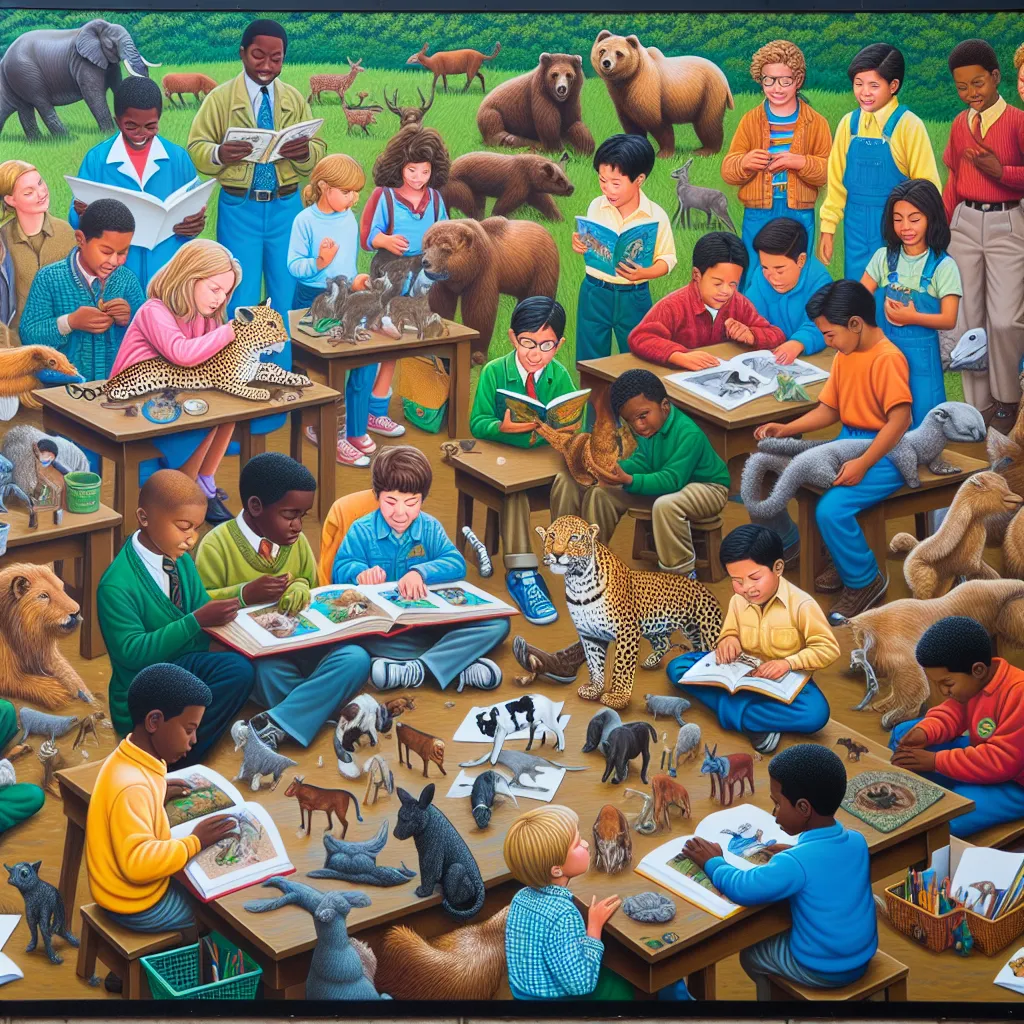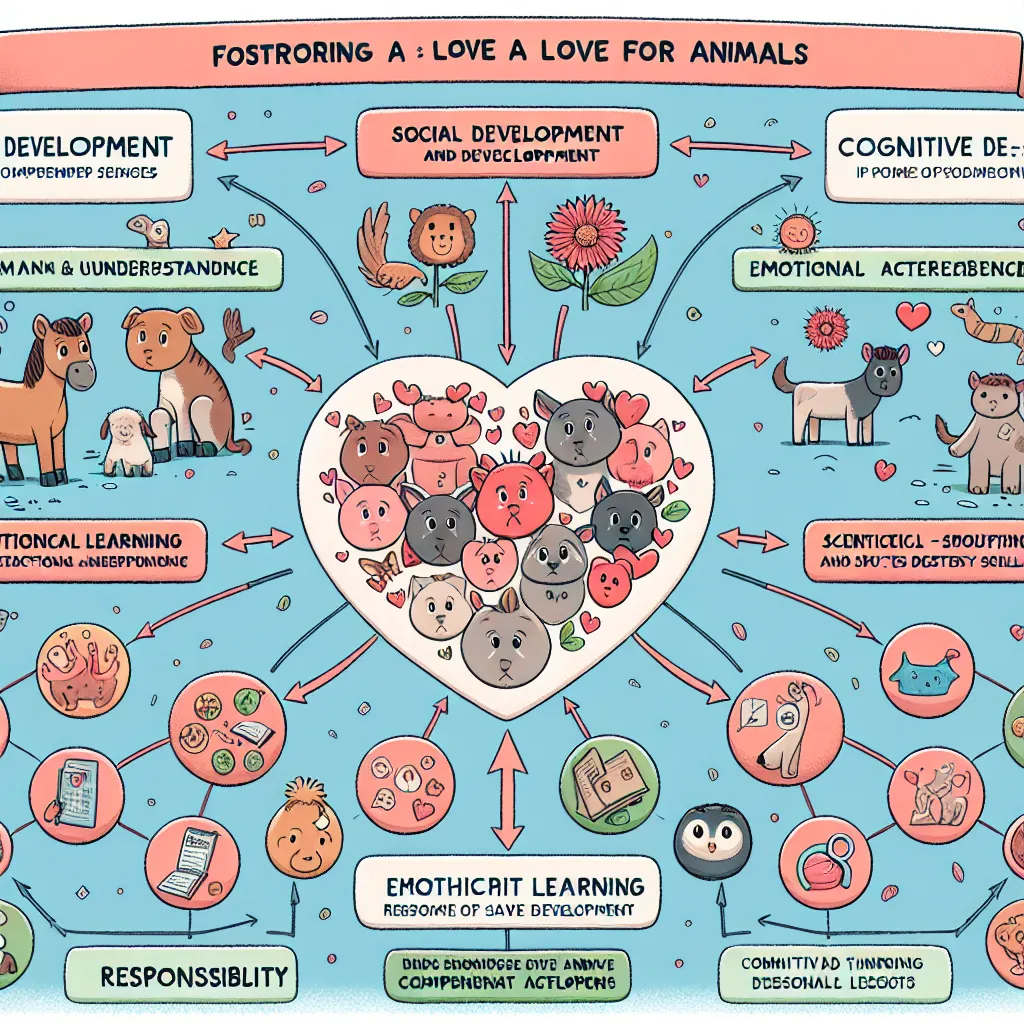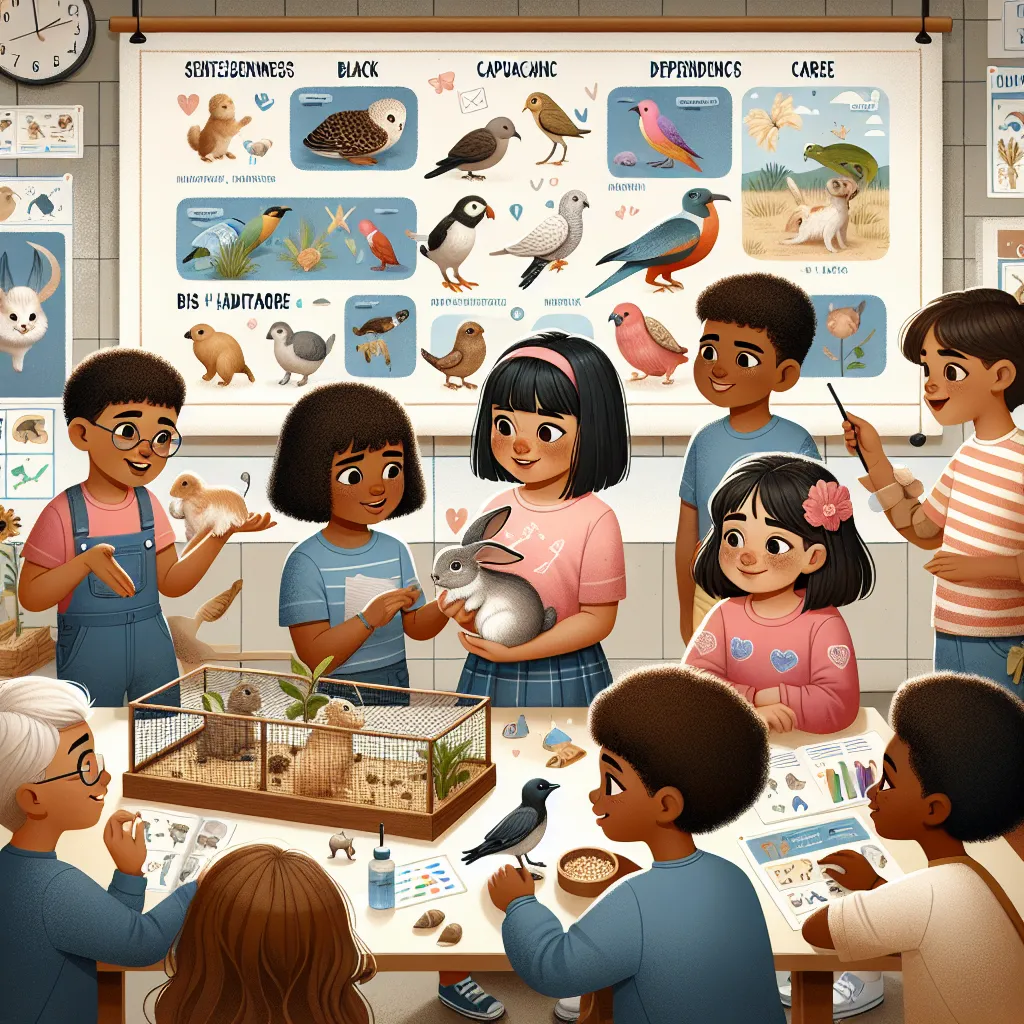Ask AI on The Internet
Question: As a foundation and intermediate phase teacher, developing a love of animals in your students is an important aspect of their holistic development. Write an essay of 1000-1200 words in which you discuss why this is important and how can you as foundation and intermediate phase teachers effectively foster a sense of compassion and love for animals in your students? (reference the sources at the end) Your essay should consider the following: 1. Why fostering a sense of compassion and love for animals in children is important. 2. An understanding of how developing a love of animals can contribute to students' overall social, emotional, and cognitive development. 3. Teaching resources. 4. Discussions. 5. Activities or projects. 6. Integration of technology. 7. Role modelling/Reflections of your own experiences. 8. Please note this scaffolded question builds upon the previous assignment, allowing you to delve deeper into the topic and explore various aspects of developing a love of animals in students.
### The Importance of Fostering a Love of Animals in Students Fostering a sense of compassion and love for animals in foundation and intermediate phase students is a crucial component of their holistic development. Encouraging empathy towards animals not only contributes to their emotional and social growth but also enhances their cognitive abilities and promotes a sense of responsibility and ethical understanding. As teachers, there are several effective strategies to impart a love for animals, which include leveraging various teaching resources, discussions, activities, projects, integration of technology, and role modeling. #### Importance of Compassion Towards Animals Cultivating compassion and love for animals in children is foundational for several reasons. Firstly, it humanizes students, teaching them empathy and respect for other beings. This attribute can later translate into respectful behavior towards other people. Studies have shown that children who exhibit kindness to animals are more likely to develop positive social behavior patterns and higher empathy levels. Additionally, being compassionate to animals helps in teaching children about responsibility and care. When students learn the needs and habits of animals, they understand the importance of nurturing and caring for other living beings. This experience can instill a profound sense of duty and ethical consciousness that will likely extend to various aspects of their lives. #### Contribution to Social, Emotional, and Cognitive Development Engaging with animals can significantly bolster a child's emotional intelligence. Caring for pets or interacting with animals can reduce stress, anxiety, and promote a sense of well-being. Emotional development is enhanced when children learn to communicate with animals, interpreting their needs and responding with care and concern. From a social standpoint, group activities involving animals can enhance cooperation, teamwork, and communication among peers. These skills are crucial for effective social interaction. Cognitively, learning about animals can enrich a child's knowledge about biology, ecosystems, and environmental science. Students learn about the diversity of life, adaptation, and the interdependence of species. This builds a strong foundation for scientific inquiry and understanding complex systems. #### Teaching Resources Effective education about animals requires a variety of teaching resources. Books, documentaries, and educational videos can be tailored to suit different learning levels and styles. Interactive lessons, such as using anatomically correct animal models, can help make the learning more tangible. Educational software and applications that simulate animal habitats or focus on animal care can also be valuable. Many free and paid applications provide interactive and engaging methods for students to learn about animals virtually. #### Discussions Classroom discussions can play a vital role in fostering a love for animals. Teachers can organize open dialogues where students share their experiences with pets or encounters with animals. These discussions can be facilitated through questions like: "How can we help protect endangered species?" or "What can we learn from animal behavior?" Engaging students in debates and ethical discussions about animal rights, conservation efforts, and humane treatment can further deepen their understanding and compassion for animals. Asking students to reflect on these topics critically helps in developing their analytical and empathy skills. #### Activities and Projects Interactive activities and projects are instrumental in fostering love and compassion for animals. Here are a few ideas: 1. **Field Trips:** Visits to zoos, animal shelters, or nature reserves can provide firsthand experience with animals. 2. **Guest Speakers:** Inviting veterinarians, animal trainers, or conservationists to speak about their work can inspire students. 3. **Class Pets:** Having a class pet can teach students about responsibility and care. 4. **Science Projects:** Assigning projects on different animals, their habitats, and conservation status helps in intertwining empathy with learning. 5. **Service Projects:** Organizing drives for animal shelters or participating in wildlife conservation projects can inculcate a sense of community service and responsibility. #### Integration of Technology Leveraging technology can make the learning experience about animals more engaging and comprehensive. Virtual Reality (VR) experiences can provide immersive experiences of animal habitats and wildlife expeditions. Augmented Reality (AR) can bring animals into the classroom through mobile devices, allowing students to interact with 3D models. Educational apps focusing on animal care and simulations of wildlife reserves can also be integrated into the curriculum. Platforms like National Geographic Kids, Khan Academy, and other educational sites offer numerous resources that can be utilized to teach students about animals. #### Role Modeling and Personal Reflections As educators, role modeling compassionate behavior towards animals can have a profound impact on students. Sharing personal stories about pets or experiences with animals can make the concept more relatable. Teachers who volunteer at animal shelters or participate in conservation activities can inspire students through their actions. Reflecting on personal experiences with animals helps in humanizing the issue. For instance, sharing a story about rescuing a stray can not only capture students' attention but also teach them about the joys and responsibilities of animal care. ### Conclusion In conclusion, developing a love of animals in students is essential for their holistic development. It teaches empathy, respect, and responsibility, which are crucial for their social, emotional, and cognitive growth. By utilizing a variety of teaching resources, fostering insightful discussions, organizing engaging activities, integrating advanced technology, and serving as role models, teachers can effectively nurture a compassionate and loving attitude towards animals in their students. This compassion for animals will likely extend into broader altruistic behaviors, contributing to the creation of a more empathetic and socially responsible generation. ### References 1. Beck, A. M., & Katcher, A. H. (2003). Future directions in human-animal bond research. *American Behavioral Scientist, 47*(1), 79-93. 2. Melson, G. F. (2001). *Why the Wild Things Are: Animals in the Lives of Children*. Harvard University Press. 3. Serpell, J. (1999). *In the Company of Animals: A Study of Human-Animal Relationships*. Cambridge University Press. 4. National Institutes of Health. (2008). *The Power of Pets*. Retrieved from https://newsinhealth.nih.gov/2008/feb/power-pets 5. Myers, G. (2007). The significance of children and animals: Social Development and Our Connections to Other Species. *Purdue University Press*.
Think your answer is better than the AI's? Post it below.
Other Most Relevant Posts:
Question Tags
If you want your question answered by an AI, click here.







Post your own comment: